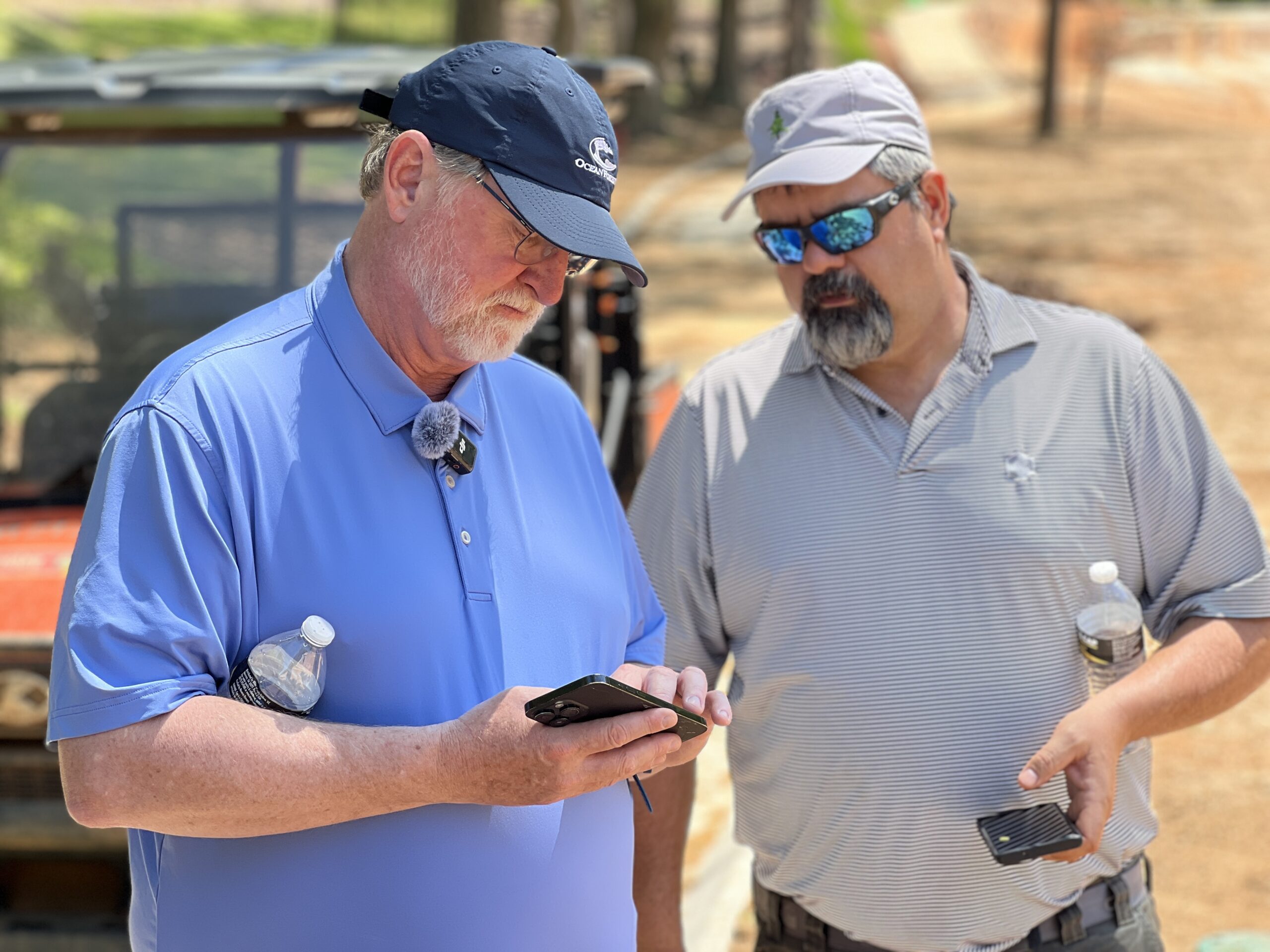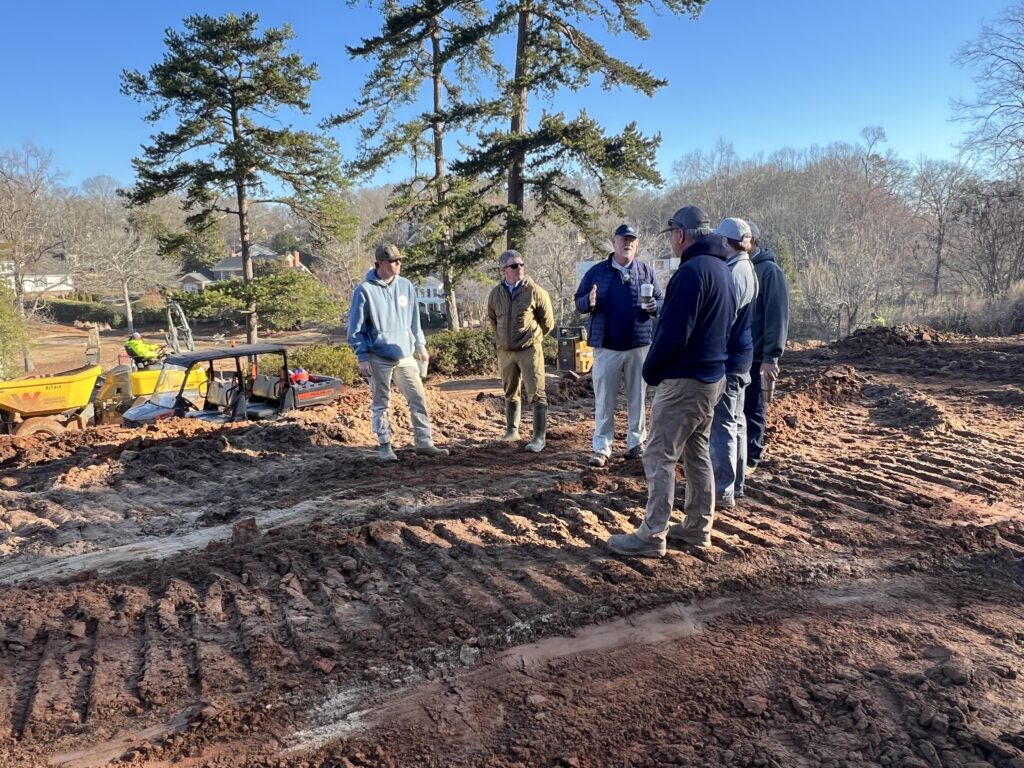
Beau Welling returns to Greenville’s Chanticleer, where his journey began (Straight Up Sports)
Published:
Imagine, for a moment, that you’re a highly-regarded portrait artist. For more than three decades, you’ve devoted your skills to drawing and/or painting images of the rich and famous, and achieved your own fame in doing so.
Now, picture your latest assignment: restoring a famed rendition of the image that first inspired your creativity – the mentor who made all your artistry possible.
Substitute “golf courses” for “portraits,” and you have some idea what Beau Welling’s latest project means to the Greenville native and golf architect, as he wraps up his renovation of Greenville Country Club’s famed Chanticleer Course – a project that, in many ways, has lasted a lifetime.
Welling, 55, first took to GCC’s fairways at age 6, starting on the now-gone par-3 “kids” layout, moving up to the Riverside Course as his game improved, and finally “graduating” to Chanticleer, the Upstate jewel built in 1970 by acclaimed architect Robert Trent Jones and once ranked among the top 100 courses in America.
“I was fortunate to grow up at Greenville Country Club, which had a good juniors program,” directed by then-professional Paul Voyer and his staff, Welling said. “It’s not a surprise to me that the club produced good players and passionate fans.”
But 55 years after the course’s debut, and even after a 2002 upgrade by Jones’ architect son Rees, Chanticleer was showing its age. So when the club’s administration approached Welling for advice on how to restore the course’s past glory, and ultimately commissioned him to do the work, he was excited – and, he admitted, slightly intimidated.
This, after all, wasn’t just any golf project. The members were people he’d known all his life, had grown up with. For Welling, this was a home game.
“Johnny Dennis, one of the longtime leaders of the club, said they needed to bring the luster back to the club,” he said. “For me, where that gets challenging is the people side. I mean, it’s one thing to have differences of opinion (about a project), but when it’s with someone you went to preschool with …
“Our first committee meeting, I said, ‘I’m going to run this like every project I’ve done around the country, not do anything different.’ Then (club member) Jackson Hughes brought out two bottles of wine, and I said, ‘Well, that’s about the norm.’”
Welling laughed. “The joke was that this is going to be the most fun project I’ve done – or the stupidest thing I’ve done.”

The answer: “It’s been super fun,” he said, “but I’m still nervous to see the reactions when the course reopens” this fall.
The renovation evolved from a relatively modest plan to update Chanticleer’s greens into a full-blown makeover addressing the course’s irrigation systems, changing playing surfaces from heat-sensitive bent grass to more tolerant Bermuda, and – most dramatically – making major changes to three holes. By flipping the nines, the old ninth hole becomes the 18th; the former 17th hole is now the eighth; and a new par-3 ninth replaces the former par-4 18th, taking the course from a par-72 to par-71.
Added yardage, notably on the former fifth, 11th and 17th holes, increases the course’s maximum length from 6,722 yards to about 7,000. “For elite players” – Chanticleer has produced a few, including PGA Tour members Lucas Glover, Bill Haas and Ben Martin – “it’s going to play harder,” Welling said. “On the other end, we’ll add more forward tees and remove some greenside bunkering to give those players more room on the ground.”
He also wanted to update Chanticleer from the ground up. “When I was growing up, this was a very tough test and still is,” he said, “but it was obvious to me to see how technology has changed things.”
Fortunately, Welling knows modern course design and construction, having learned from some of the game’s best over the past 35 years.
His path to golf architecture began as a youngster, when he would sketch imaginary golf holes and take family trips to play at Augusta National and Cypress Point. Welling majored in physics at Brown University (while playing for the golf team), but also took classes in landscape architecture at the nearby Rhode Island School of Design.
Back in Greenville, Welling’s father, Irv, was involved in the development of Thornblade Golf Club and got to know the architect, Tom Fazio. Young Beau was happy to take advantage of that connection. “I started calling Tom, and since I was the son of a client, he had to answer,” he said with a laugh.
A summer internship in 1989, followed by a brief, abortive venture into investment banking, turned into “me working for (Fazio) for a decade,” Welling said. In 2007, he went out on his own with Beau Welling Design, and he currently has eight projects underway in Texas, including three with the PGA of America’s new headquarters in Frisco. There’s also a little project in Augusta, in collaboration with a fairly well-known golf name.
Welling first connected with Tiger Woods via the player’s father, who reached out to the then-Fazio associate for help in one of Woods’ first learning centers. “Earl joked about Tiger designing courses some day and said, ‘I’d like to get your opinion,’” Welling said. “When I decided to go out on my own, he was my first client.”
The best-known Woods-Welling collaboration is Bluejack National in Texas, one of Woods’ first projects. Currently, the two are combining to revitalize the Augusta Municipal Golf Course, affectionately known as “The Patch,” a project funded in part by Augusta National, with completion of the main course and a Woods-designed short course scheduled for 2026.
It all keeps Welling busy, moving dirt and catching flights. So, too, does his involvement with the sport of curling; he’s been president of World Curling since 2022, and will oversee the sport’s Olympics competition next year. But the project dearest to his heart remains the one closest to home.
When first approached about Chanticleer, Welling said his reaction was “you need to think bigger” than a greens project. A two-year discussion resulted in the capital plan that ultimately led to Welling’s finished product: an improved but also historically accurate Chanticleer, one he’s proud of.
“The previous renovation, there were things that weren’t done,” Welling said. “I think (the club’s leadership) realized if we’re going to do this with our prize asset, it’s important we do it right.”
The proof will be in the final product. Welling said he won’t know for sure until it’s done. So there remain some nerves on his part. “I feel a lot of responsibility,” he said, “that they picked the right guy.”
Like a signature portrait, the result has to be picture perfect.
(This column by Bob Gillespie first ran on “Straight Up Sports” on July 5, 2025.)